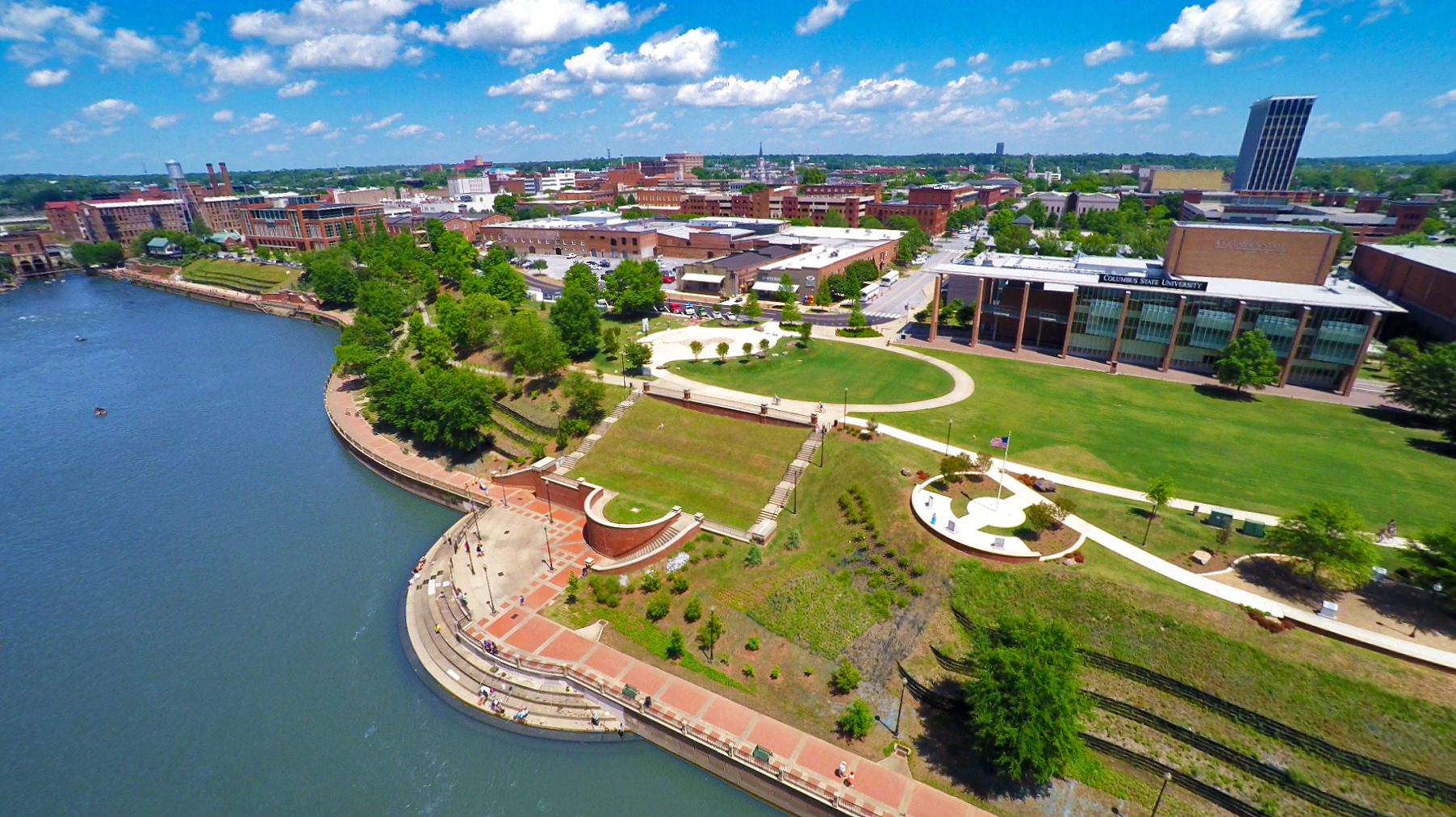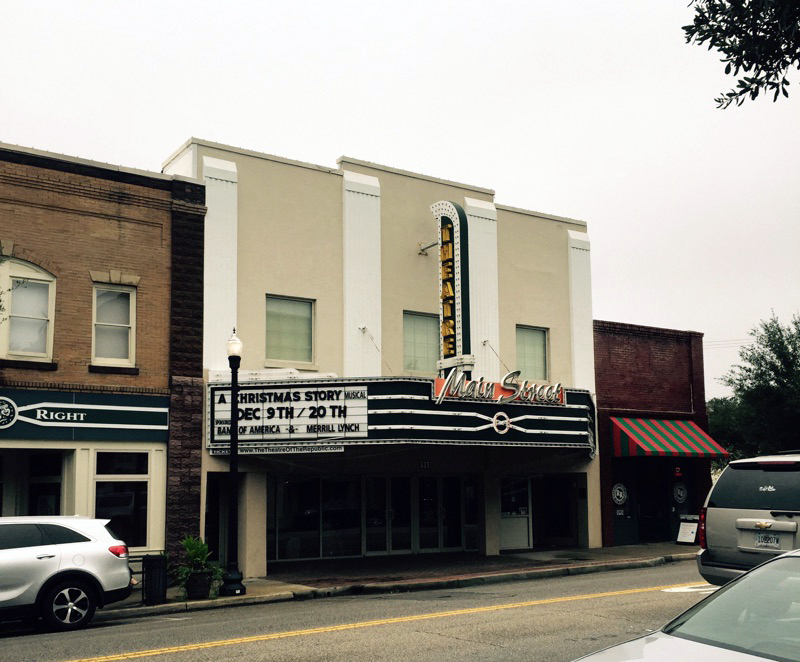
How 4 Knight communities are creating city success
Hello, 2016, I can’t believe you are here. Wintertime? It’s 81 degrees in Miami as I write this, and reflect on what I learned in the last year.
I started my current job as community foundations director in June and went on a learning tour across the country to all 18 of Knight’s nonresident communities. My plan—simple but strategic for this Miami gal: Visit the Northern communities in the warmer months and the Southern ones in the fall and winter (mixing things up by ice fishing with young professionals in Grand Forks, N.D.). It was tough to do, but I visited all 18 in a six-month period. (Remember, my 18 communities are spread out across the country with limited direct flights to many of the cities; see them highlighted in blue below). While racking up my frequent flyer miles, I had so much fun learning from my diverse set of communities. I feel lucky to work with each one of them.

A special thank you to the leadership of the community foundations of the final four I visited. I was able to see and do so much because of all of you: Bradley Hurlburt from Community Foundation of Palm Beach and Martin Counties; Betsy Covington from Chattahoochee Community Foundation (Columbus, Ga.); Katherine Dennis from Central Georgia Community Foundation (Milledgeville, Ga); and Edie Blakeslee from Waccamaw Community Foundation (Myrtle Beach and Conway, S.C.).
Here is some of what I have learned:

West Palm Beach.
Palm Beach County (West Palm Beach and Lake Worth), Fla.
West Palm Beach and Lake Worth have two of the most diverse populations in the county with a total of 140,000 residents. While both cities have increasingly vibrant downtowns, there are major equity issues. In West Palm Beach, the downtown is flourishing with business development, but the Historic Northwest Community, just blocks away, is left out of this success. In fact, the community design inhibits connection with the downtown. Knight Foundation, city officials and community partners are examining closely with Gehl Architects how we can better connect the success of the downtown to the stressed community next door. Also, while West Palm Beach has a burgeoning entrepreneurial community, Lake Worth has a vibrant arts community. Community leaders are studying the potential to better connect the two communities through art.

Columbus, Ga.
A community of 110,000, Columbus’ population has steadily grown over the past decade. The economy has diversified from traditional manufacturing to include tourism around its beautiful river, tech entrepreneurship and a burgeoning film industry. With strategic investments in recreation around the river, the urban core is a place where people can both work and be outdoors. And the location of the river rapids could not be any better; it cuts right through Uptown (the downtown area). And we are talking serious rapids, Class IV-plus to be exact.
With this combination of outdoor beauty and places to work, people are now choosing to live Uptown. Columbus State University has noticed this momentum and is locating more departments and student housing in the downtown area. However, economic segregation remains high, a challenge the community seeks to address. The Minimum Grid Project looked at that closely: what is the minimum connectivity needed between Midtown and Uptown with a close eye on economic opportunity? We are excited to look into piloting a few of the recommendations.

Milledgeville, Ga.
The former state capital and hub for mental health treatment, Milledgeville is slowly recovering its population and now has just over 19,000 residents. With multiple universities, including Georgia’s best public liberal arts college, Georgia College and State University, the community is full of young people. The problem is that almost none of the graduates stay there. However, this is slowly changing. With Georgia Military College and Georgia College and State University in the heart of downtown, combined with strategic planning investments over the past decade, the downtown is a fun, vibrant place to be. Plus, the entrepreneurial community is in the initial phase of development, clustered around access to broadband networks. As the city transforms, many graduates are trying to determine how to stay in the community, even though there is a lack of housing in downtown.
The city also has its problems with equity; the Harrisburg community that borders downtown is disenfranchised from the transformation underway. That’s why Knight is working with the community on building a minimum grid of connections for pedestrians, which ideally will allow residents to safely move from their community to downtown. With plans to revitalize the Central State Hospital, once the largest mental health care institute in the country, there may be more entrepreneurial activities burgeoning just 2 miles from downtown.

Horry County (Myrtle Beach and Conway), S.C.
The cities of Myrtle Beach and Conway have a total population of 50,000 residents. While Myrtle Beach is primarily a tourist town – with over 14 million visitors a year to the coast – Conway is a landlocked university town. What’s interesting is the potential to better connect the communities, using the talent of Conway and the gorgeous natural resources of Myrtle Beach. That is what community leaders are thinking.
Both cities are experiencing an aging population, a lack of a diversified economy and an exodus of college graduates. President Terri DeCenzo of Coastal Carolina University, which has almost 10,000 students in Conway, realizes the importance of this too. Tremendous intellectual property is coming out of Coastal Carolina and President Decenzo believes that this can help build local businesses. Knight funded the Conway Innovation Center to do just that – using businesses and academics to foster new startups that result in new jobs for Horry County. Because of its success, the university is looking to expand, and there is an opportunity to better connect what has become a vibrant downtown with the university. Planners are also thinking about better connecting Conway to Myrtle Beach, which could help encourage talented professionals to expand into the tourist community.
And with that, my initial tour of Knight’s 18 nonresident communities is complete. I look forward to visiting them again and to continuing to learn from them in 2016.
Lilly Weinberg is the program director for community foundations at Knight Foundation. Email her at [email protected] and follow her on Twitter @lillyweinberg.
Recent Content
-
Community Impactarticle ·
-
Community Impactarticle ·
-
Community Impactarticle ·


